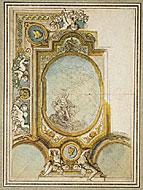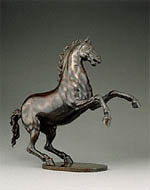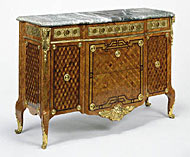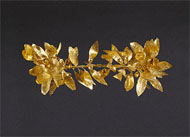Shape and form define objects in space. Shapes have two dimensions–height and width–and are usually defined by lines. Forms exist in three dimensions, with height, width, and depth.

Studies for a Ceiling Decoration, Charles de la Fosse, about 1680
Shape has only height and width. Shape is usually, though not always, defined by line, which can provide its contour. In this image, rectangles and ovals dominate the composition. They describe the architectural details for an illusionist ceiling fresco.

Rearing Horse, Adriaen de Vries, 1610–1615
Form has depth as well as width and height. Three-dimensional form is the basis of sculpture, furniture, and decorative arts. Three-dimensional forms can be seen from more than one side, such as this sculpture of a rearing horse.

Commode, Jean-François Oeben, about 1760
Geometric shapes and forms include mathematical, named shapes such as squares, rectangles, circles, cubes, spheres, and cones. Geometric shapes and forms are often man-made. However, many natural forms also have geometric shapes. This cabinet is decorated with designs of geometric shapes.
Organic shapes and forms are typically irregular or asymmetrical. Organic shapes are often found in nature, but man-made shapes can also imitate organic forms. This wreath uses organic forms to simulate leaves and berries.

Gold Wreath, Greek, 300–100 B.C.
From the J. Paul Getty Museum: https://www.getty.edu/education/teachers/building_lessons/formal_analysis.html
